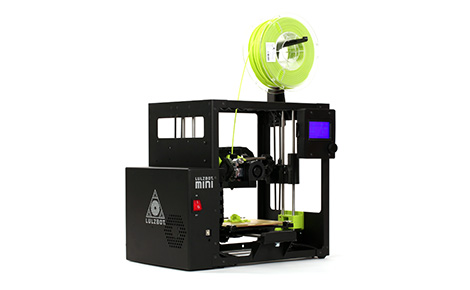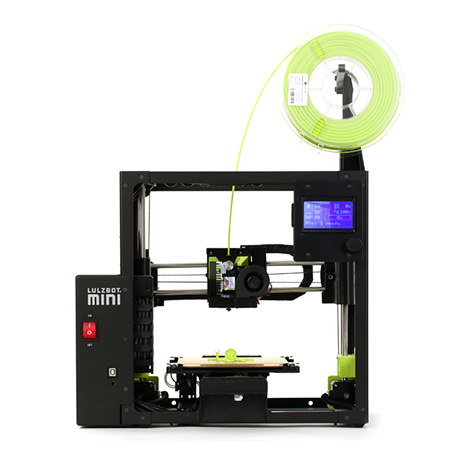
‘Whisper-quiet’ operation and a build volume increase of approximately 20 per cent over the previous model with no increase in footprint should see the LulzBot Mini 2 find some admirers among those after desktop FDM 3D Printing.
The Mini 2 features a belt-driven Z-axis and included as standard equipment are three accessories previously offered as add-ons to the original LulzBot Mini: A next generation Aerostruder Tool Head designed around the E3D Titan Aero hot end and extruder; the LulzBot modular bed system with reversible heated glass/PEI surface, and a Graphical LCD Controller for tetherless operation.
Announced at this year’s Rapid event, it highlights the role of desktop 3D printing to the industry at large, and LulzBot’s own renewed focus on the company’s core markets in product and process engineering, manufacturing, and education.

“LulzBot 3D Printers aren’t cheap,” said Aleph Objects’ marketing director Ben Malouf. “They are engineered and built to withstand thousands of continuous hours of operation with very little maintenance.
“They are manufactured in the USA from quality domestic and imported components, and backed by a friendly and knowledgeable team of support professionals in Colorado.”
He added that LulzBot 3D Printers are relied on by ‘Fortune 500 companies, all branches of the US military, small businesses, Ivy League universities, K-12 schools, libraries’ and more.
Along with the new 3D printer, Cura LulzBot Edition version 3.2 software is now in a public beta phase, and is anticipated for a final release in advance of the first shipments of Mini 2 units.
The update to Cura LE features faster load times, an updated interface, and a bevy of new slicing options. The software remains free and open source and includes hundreds of print profiles for LulzBot 3D Printers and accessory tool heads for more than 30 different filaments.
The LulzBot Mini 2 is expected to start shipping to customers in June.






